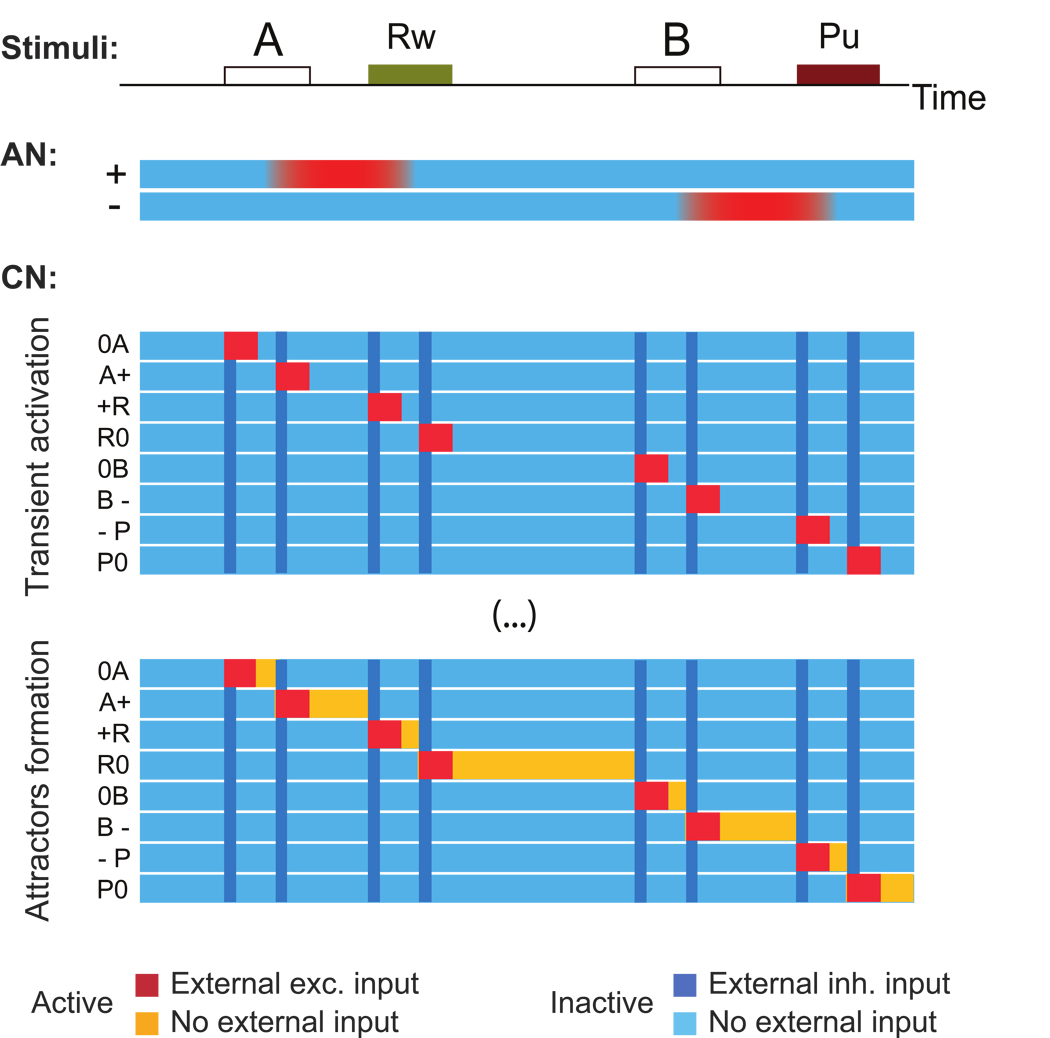Figure 6.
First learning phase: from transient events to attractors. A: The scheme of two consecutive trials. In the first trial the presentation of CS A is followed, after a delay, by the delivery of reward. In the second one, CS B is followed by punishment. B: Color coded activity of the AN (red=active, blue=inactive) as a function of time in response to the events depicted in panel A. The simulation starts in an inactive state with neutral value (0). The presentation of CS A induces a transition to a state in which the neurons encoding positive value (+) have self-sustained activity. The activity is shut down by the delivery of reward. Analogously for the CS B-Punishment case. C: Color coded activity of the CN populations as a function of time (red=active in the presence of external input, yellow=active in the absence of external input, light blue=inactive, blue=inactive because of the strong inhibitory input generated by a reset signal). Each row represents the activity of one population that is labeled according to its selectivity (e.g. 0A is a neuron that responds only when the AN is the neutral state and CS A is presented). The external events together with the activation of positive and negative states of the AN activate the populations of the CN (red bars). Every time a different population is activated a reset signal is delivered (blue stripe). D: First CN attractors: the synapses within each repeatedly activated population are strengthened to the point that the activity self-sustains also after the event terminates (yellow bars).

